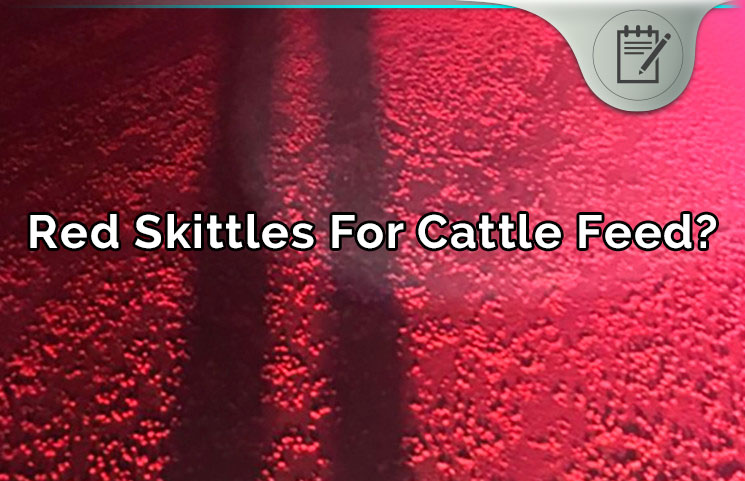The internet has been buzzing about US cattle farmers secretly feeding red skittles to their cattle.
Many people treated it just like any other internet rumor and laughed it off.
However, nobody’s laughing now, as it’s been confirmed that cattle farmers do indeed feed red skittles to their herd – and the practice has been going on for decades.
The news broke onto the internet on January 17, when Dodge County Sheriff’s Office posted an update on Facebook about a vehicle accident. A flatbed truck crashed, scattering hundreds of thousands of Skittles across a county highway.
None of the Skittles, however, featured the distinctive “S” marking. Mars, the candy’s parent company, confirmed that the Skittles were not going to be packaged and sold: instead, the Skittles were going to be added to cattle feed.
Why?
The biggest question you’re probably asking is: why would cattle farmers give Skittles to their livestock? And why have they been doing it for decades?
The short answer is: it’s because corn is expensive.
In 2012, Reuters reported that corn alternatives were in high demand in certain locations across America. Farmers in these locations – including, apparently, Dodge County – could no longer afford conventional cattle feed with corn inside.
Cattle farm operators found they could use an alternative like candy to yield savings of 10 to 50%. Back in 2012, the prices on those corn alternatives were already starting to increase.
Is It Dangerous for Cattle?
Human bodies have barely evolved to digest candy. Can a cow’s body really handle feed that’s been loaded with Skittles?
NatGeo cites a Marketplace article that investigated this specific issue. In that article, Marilyn Noble of the American Grassfed Association said that, “cows were meant to eat grass, not candy.”
Meanwhile, University of Tennessee animal nutrition professor John Waller stated that a candy-based diet for cattle is fine – and it also helps the environment because it reduces the amount of candy waste that ends up in landfills.
Animal digestive tracts also work differently than a human’s digestive tract:
“Ruminant animals are very good at utilising a wide variety of feedstuffs, because the microbes in the rumen can digest things that other animals can’t utilise.”
Nevertheless, an unrelated study from 2012 published in the Journal of Dairy Science found that giving cows sugary feed could significantly increase methane emissions.
Mars Sells Unused Candies to Animal Feed Manufacturers
This issue has gained so much attention that Mars has been forced to issue a statement on the whole debacle.
The Associated Press reached out to Linda Kurtz, a corporate environmental manager at Mars, who said that “the company sells unused candies and ingredients to processors that incorporate them with other materials to make animal feed.”
Skittles does not, however, sell directly to farmers. All its procedures also follow Food and Drug Administration regulations.
Kurtz was also able to provide specific information about the mystery in Dodge County: the spilled Skittles came from the company’s plant in Yorkville, Illinois. That plant does not sell products for animal feed.
The only other American Skittles plant is in Waco, Texas, and they sell their unused candy to a local processor that melts them down into syrup.
In any case, the Dodge County Skittles mishap opened the world’s eyes to a whole new area of the cattle feed industry. In the days following the accident, reporters on the ground struggled to determine whether or not they were actually dealing with Skittles: the red pellets smelled like Skittles, but they lacked the distinctive Skittle markings. The rain had also turned the Skittles into a “red sludge”.
Ultimately, Skittles are a cheap alternative to corn – and that’s why Skittles can be found in cattle feed sold all across America.









